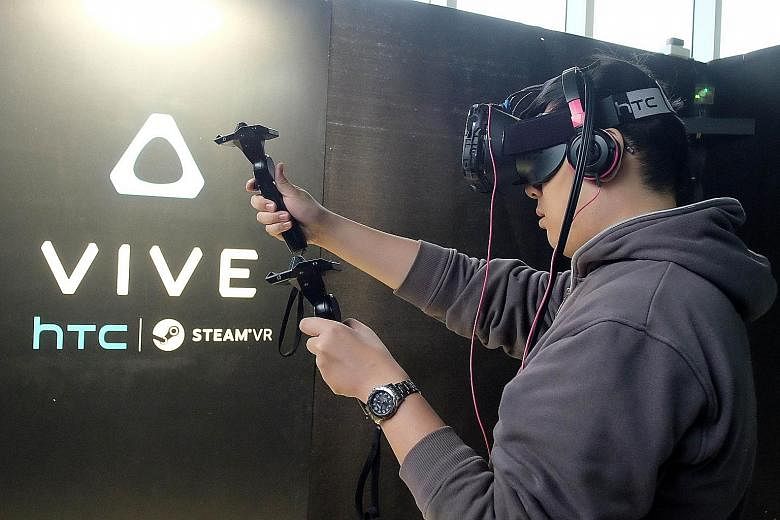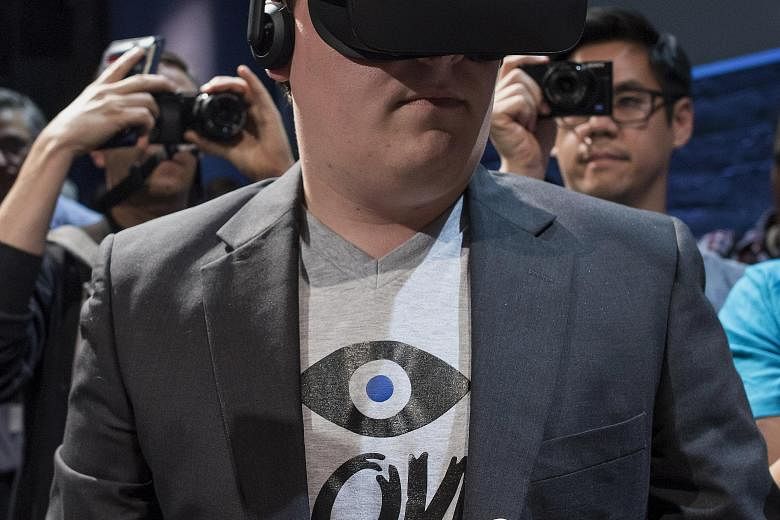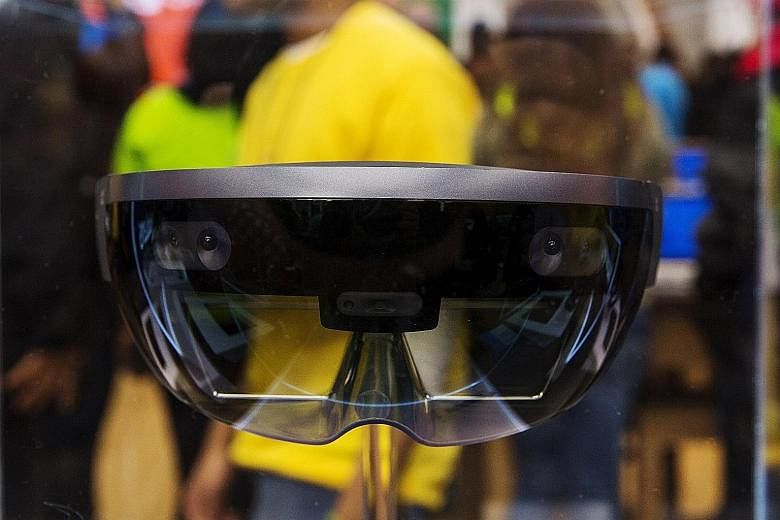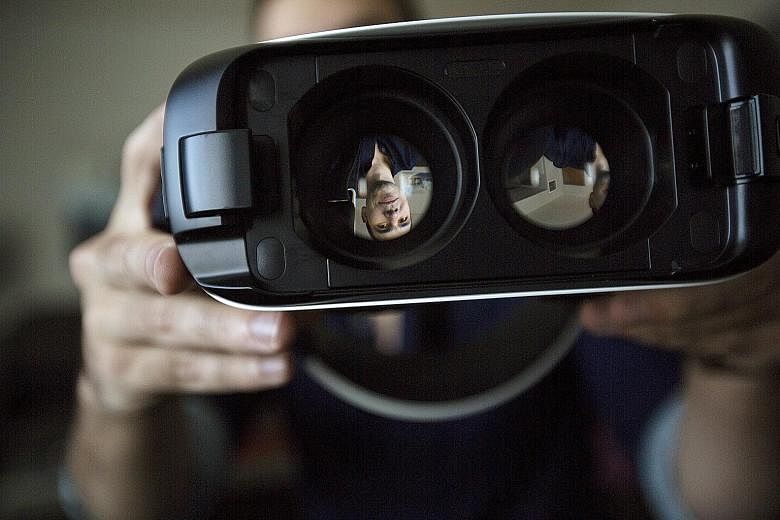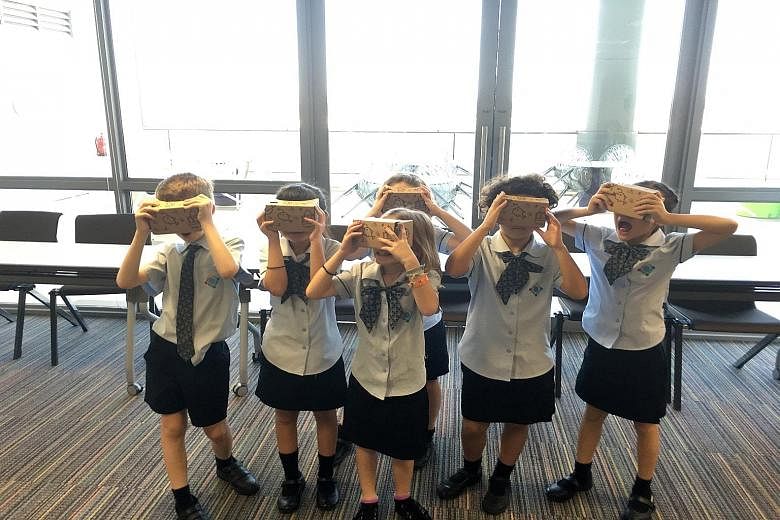1. HTC and Valve show off the Vive VR headset
In March, smartphone maker HTC and video-game company Valve Software pulled back the curtains on their collaborative virtual reality effort, the Vive headset.
The device has a tracking system that uses lasers to keep an eye on your location within a space as large as 4.6m by 4.6m, making it possible to roam around while using the headset.
The Vive is slated for commercial release in April.
2. Oculus unveils its first consumer headset, Rift, and Oculus Touch hand controllers
In June, Facebook-owned Oculus trotted out its first consumer headset, Rift, and a pair of half-moon, button-bedecked controllers, both of which it plans to release next year.
The matte black headset has two Oled displays, a wide field of view and a speaker over each ear; it will need to physically connect to a powerful computer, along with a separate sensor that tracks the user's motions.
The controls, meanwhile, enable hand gestures such as dragging objects, pointing and waving.
The company has not publicly stated a release date for the headset, though it has said it will come in the first quarter of next year.
The hand controls are slated for release in the second quarter.
3. Microsoft shows off speedy progress with HoloLens, its holographic headset
Microsoft's HoloLens, which is more correctly referred to as augmented reality rather than virtual reality as it is intended to blend 3D virtual visuals with the real world, debuted in January.
At the time, Microsoft invited a number of reporters to try out HoloLens, which it hopes could eventually be used to do things like play games and work on 3D models.
While Microsoft presented the device as a sort of futuristic set of ski goggles, the reporters were only able to test a much clunkier version of the HoloLens that was still tethered to a stationary computer, and required a so-called holographic processing unit worn around the neck.
But at the company's Build developer conference in May, Microsoft allowed reporters to try out a fully self-contained prototype version of the device that looked much more polished than the previous version.
This prototype gave a much better sense of the hard work required to fit a lot of technology into a compact, good-looking, untethered head-mounted display.
It is not clear when HoloLens will be released to the public; Microsoft has said only that a US$3,000 (S$4,200) developer edition will begin shipping early next year.
4. Cameras envision new ways to film virtual reality
At Google's I/O developer conference in June, the company announced a new kind of camera for taking live-action 3D virtual reality videos.
Called Jump, it includes 16 cameras arranged in a circular array, making it possible to capture each point of the subject from three perspectives; software can then be used to convert the footage into 3D.
Google released the Jump design for free, and GoPro started selling a fully assembled version of the device late this year.
Also this year, photography start-up Lytro - which has struggled to popularise its camera for consumers that lets you refocus images after taking them - said last month that it is working on a spherical camera for capturing live-action 3D films for virtual reality.
5. Google Cardboard goes out to New York Times Sunday print subscribers
Last month, the New York Times sent more than a million Google Cardboard virtual-reality kits to its subscribers to promote its virtual-reality documentary The Displaced, which details what happens to children displaced by war.
Though Google Cardboard - a foldable, handheld virtual-reality headset with plastic lenses that users must slip a smartphone into to power it - was introduced last year, this move brought a simple, immersive experience into many more homes.
6. Samsung starts selling its new Gear VR
Also last month, Samsung released the latest version of its Gear VR headset, a US$100 headset developed with Oculus that uses a Samsung smartphone as its computer and display.
The newest Gear VR costs half as much as its predecessor did when it came out last year, and supports more of Samsung's smartphones (the Galaxy Note 5, Galaxy S6, Galaxy S6 Edge and Galaxy S6 Edge+).
It still lacks important functions like positional tracking, which means games and other VR experiences cannot track your head movements, but it shows Samsung and Oculus are serious about marrying virtual reality and mobile devices.
TECHNOLOGY REVIEW
